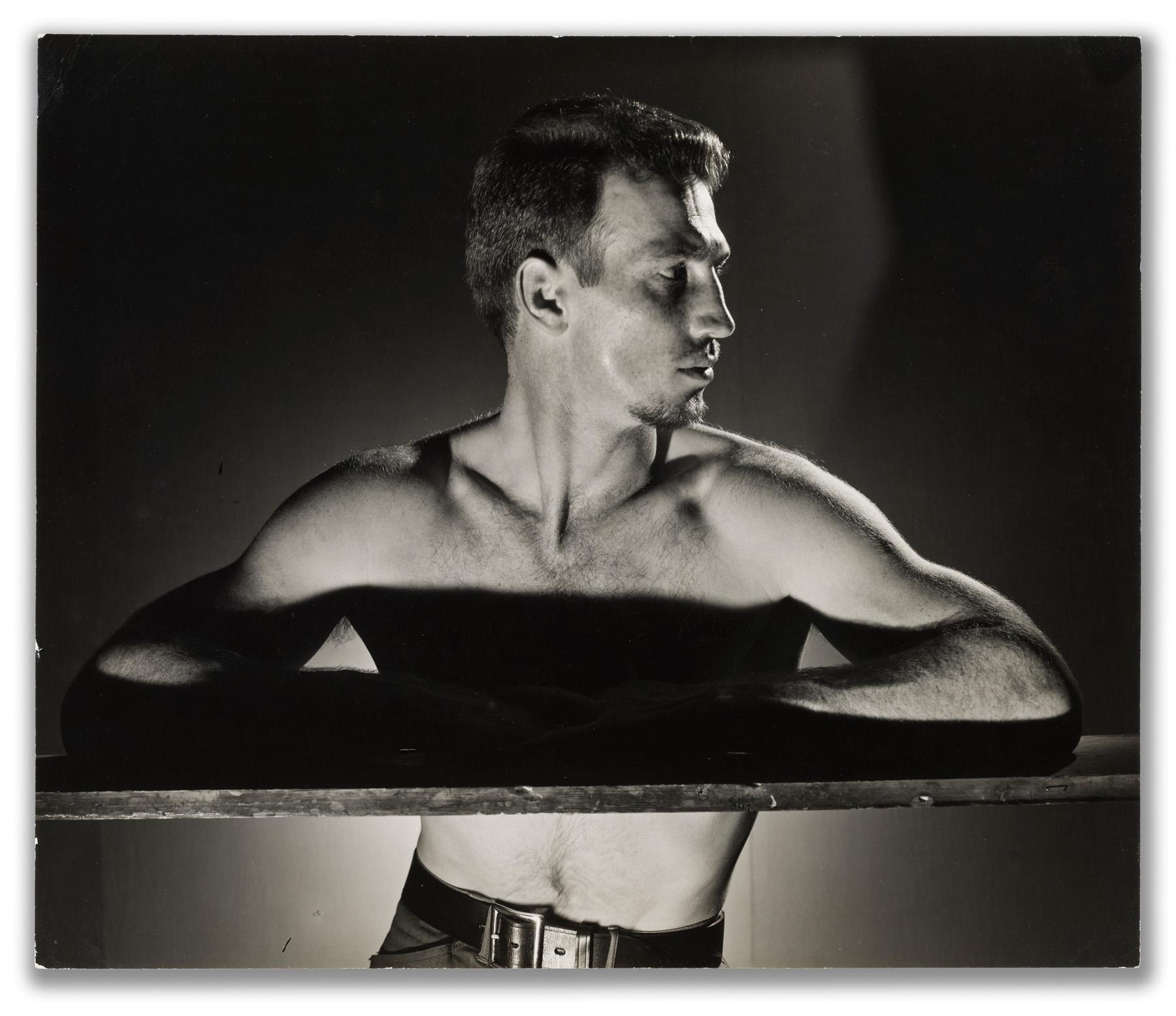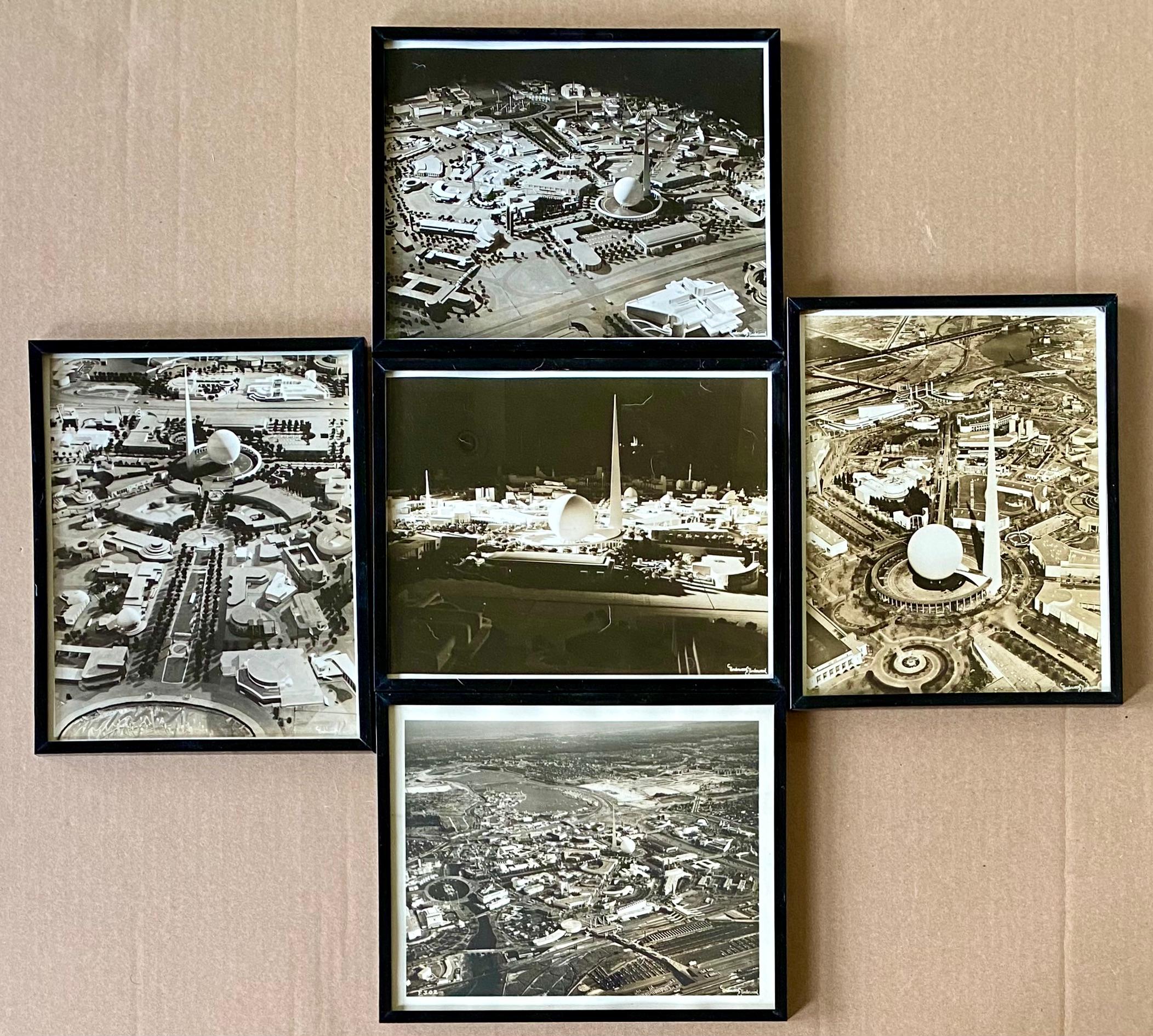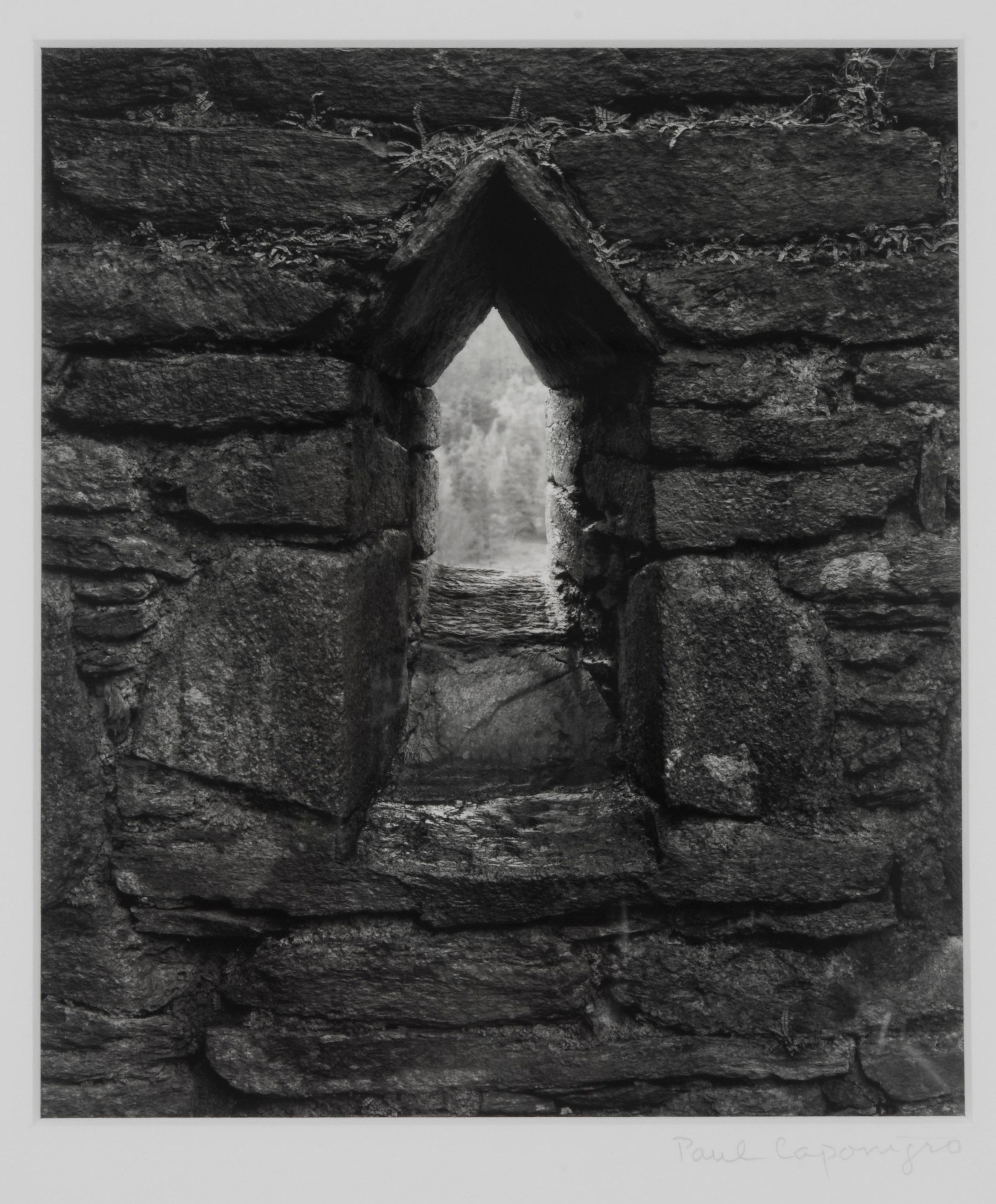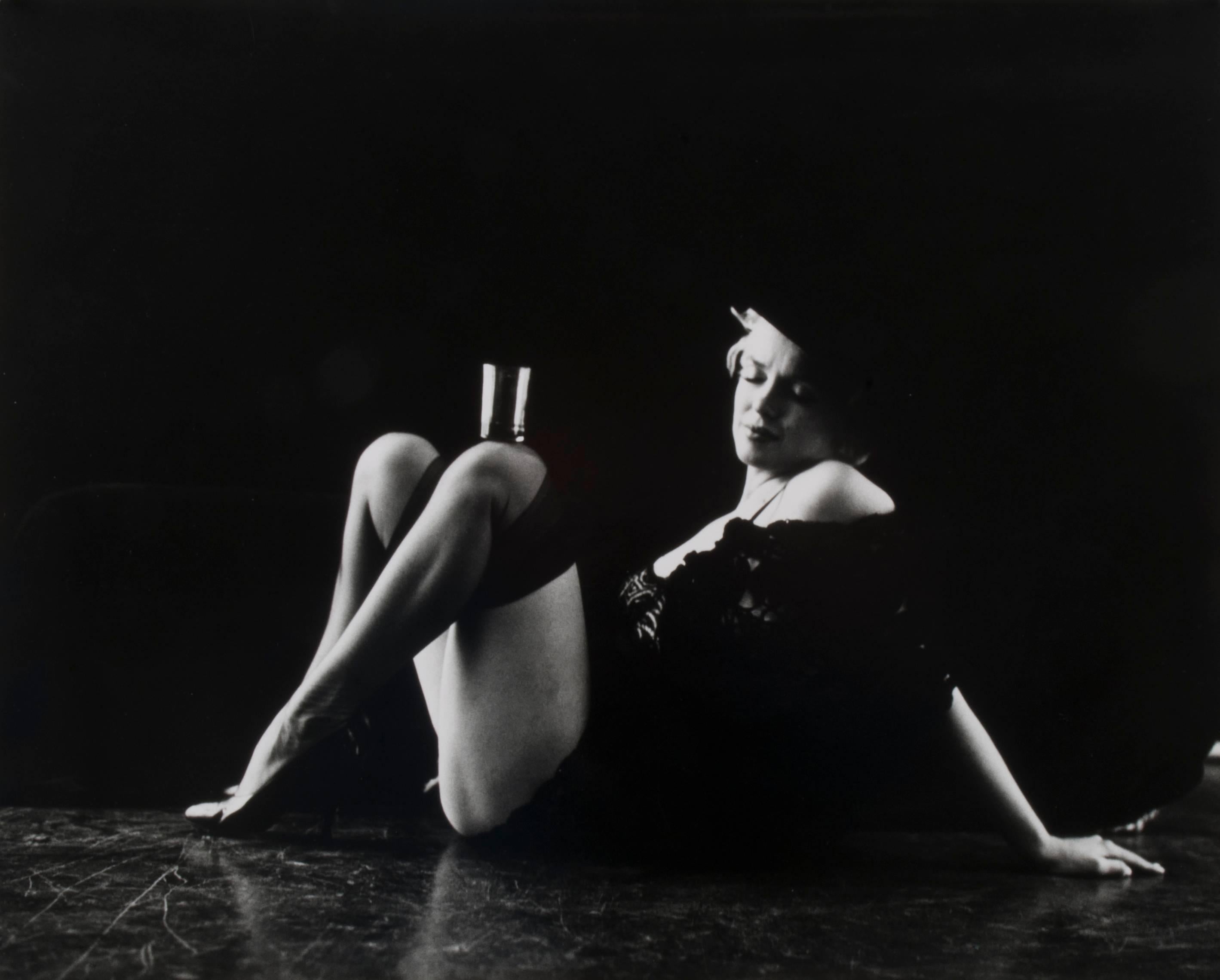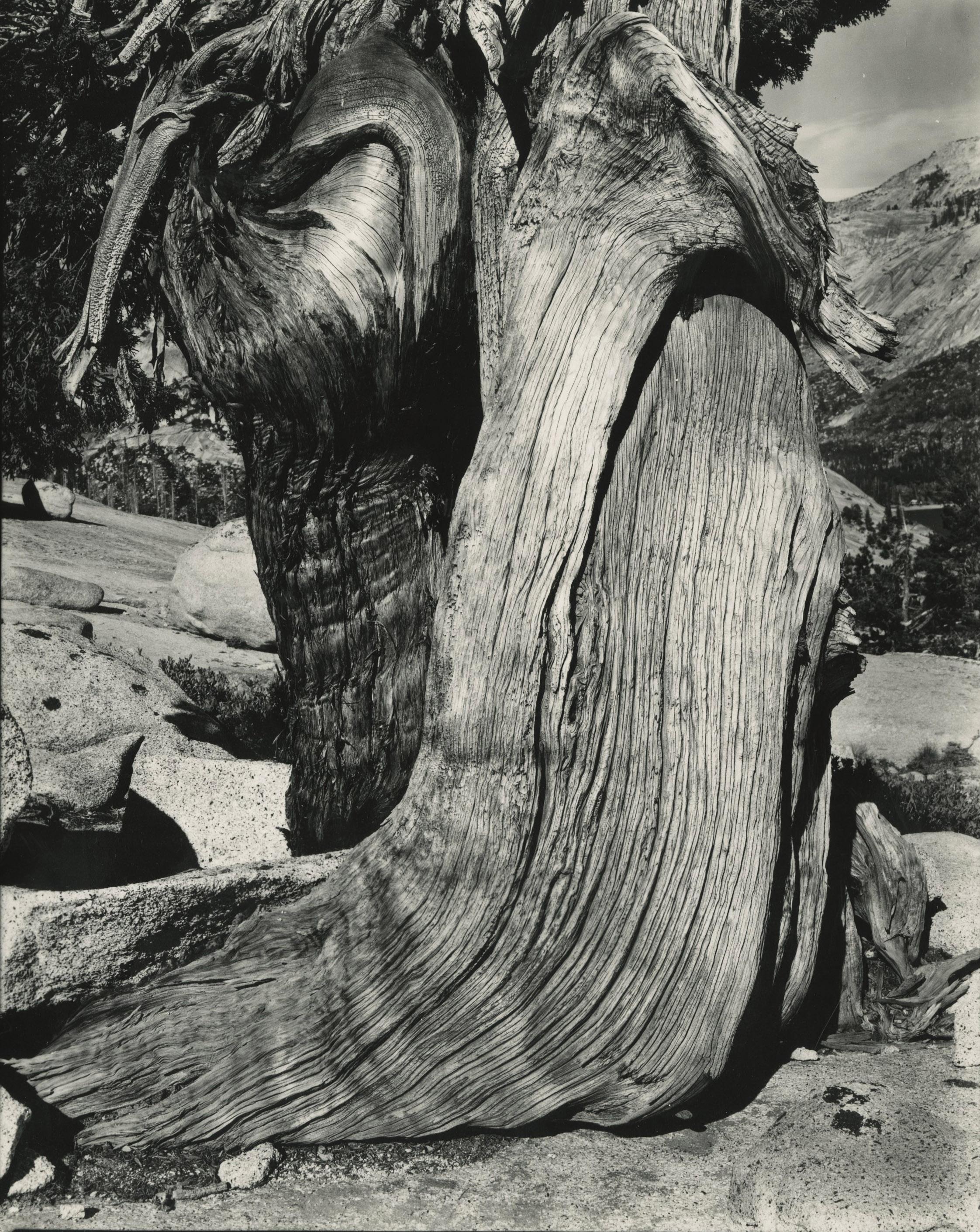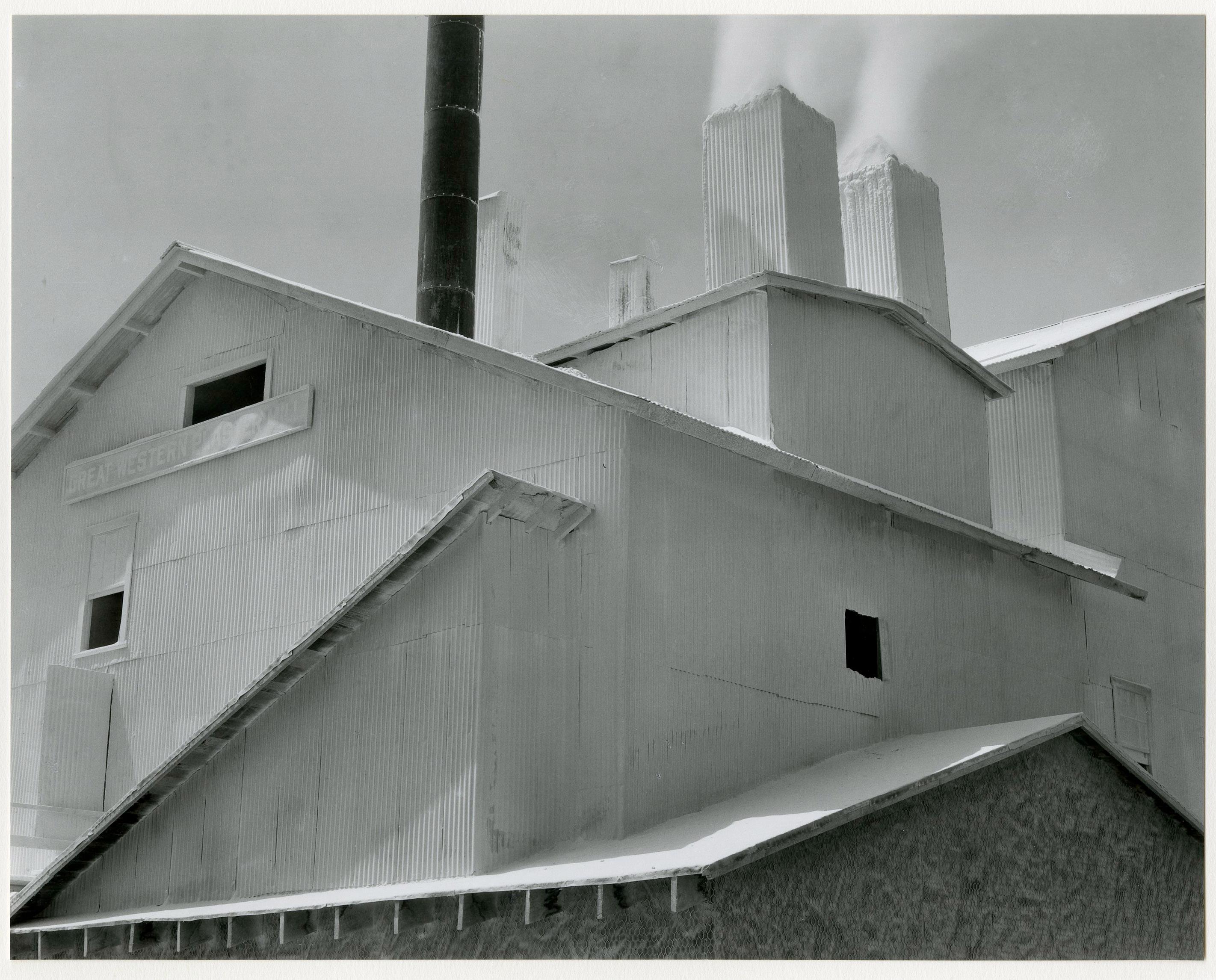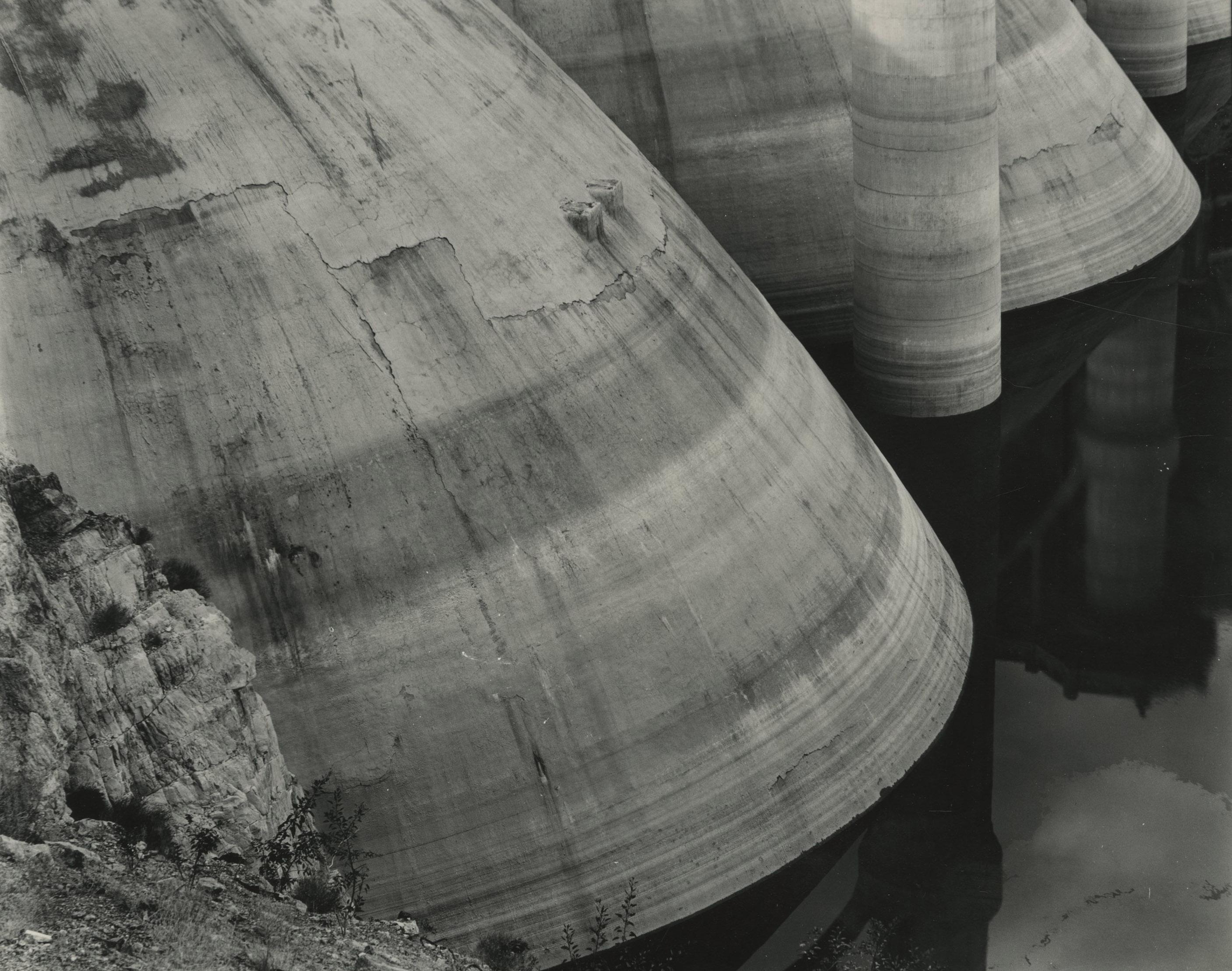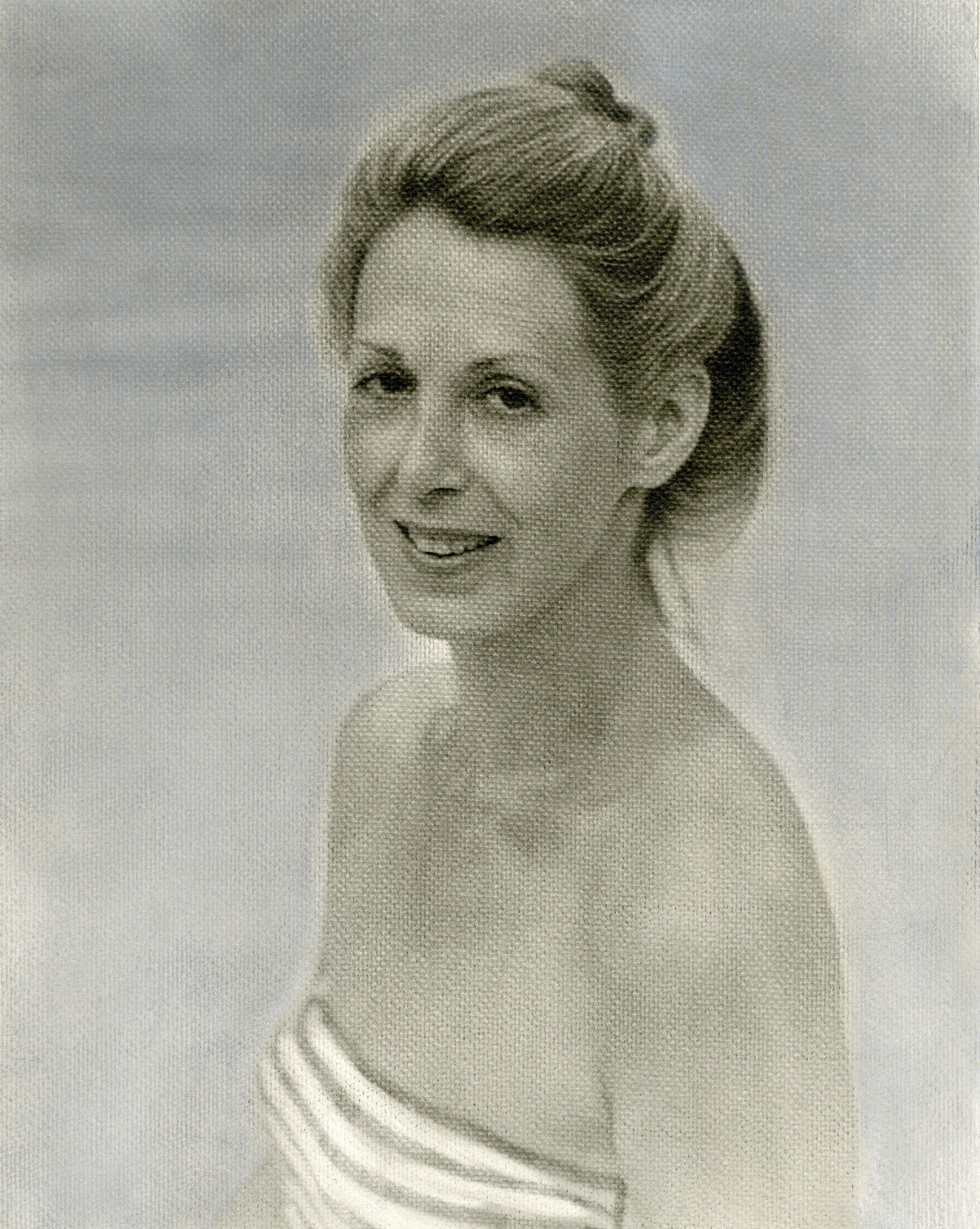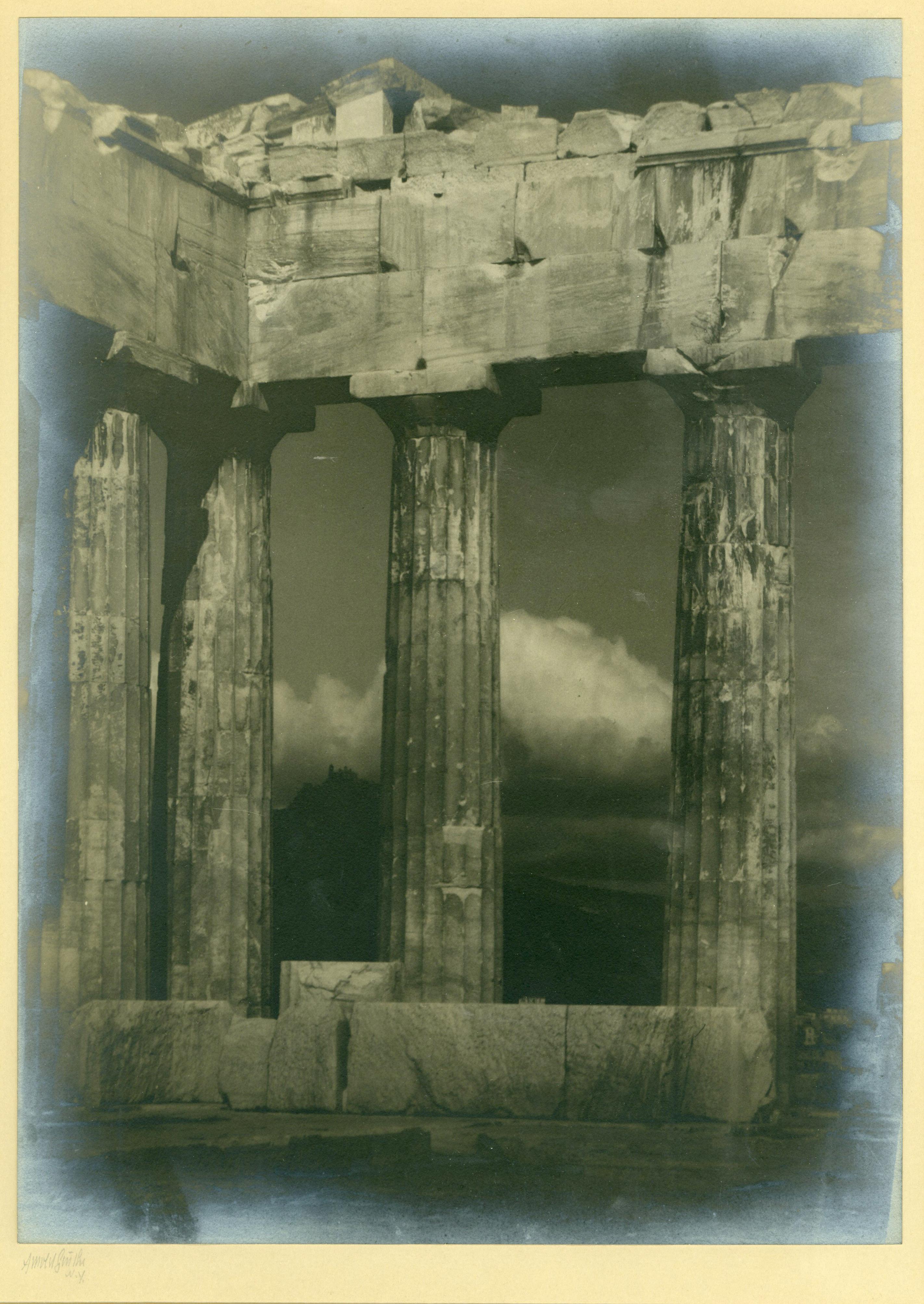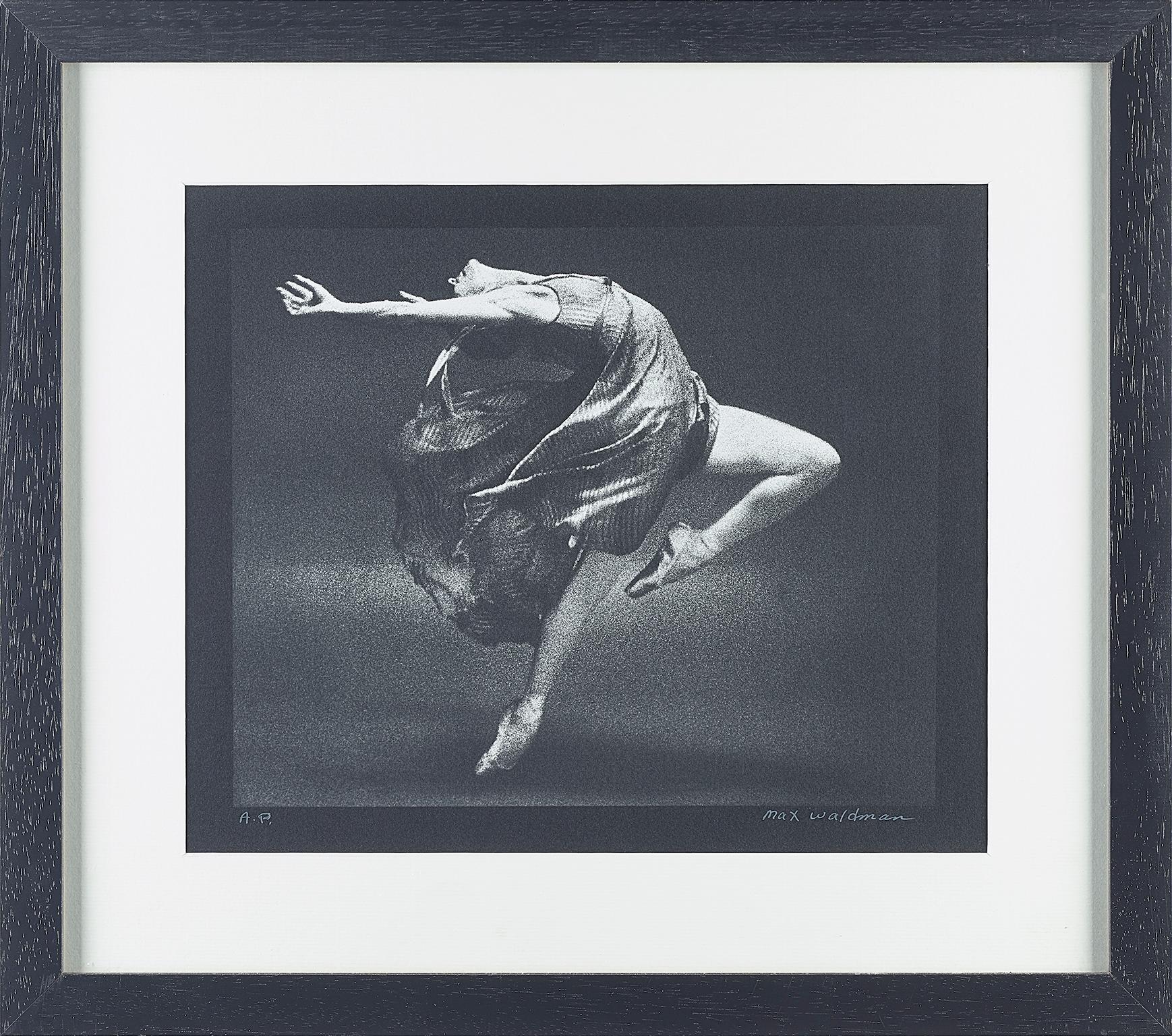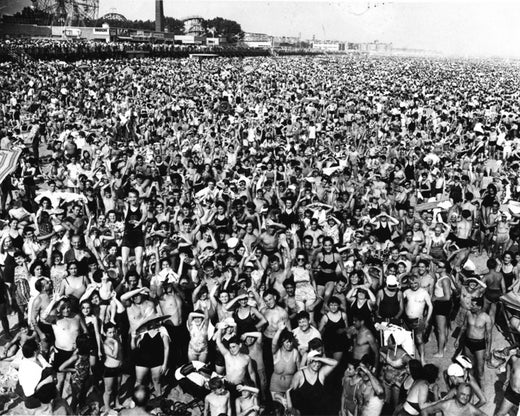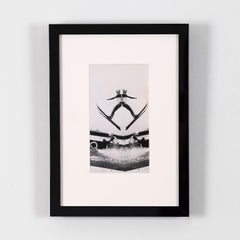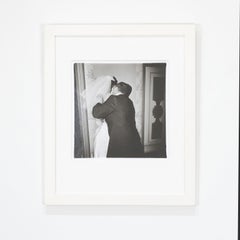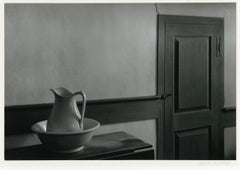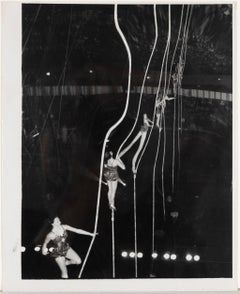
Tightrope Ladies
View Similar Items
Want more images or videos?
Request additional images or videos from the seller
1 of 10
WeegeeTightrope Ladies1950
1950
$3,600List Price
About the Item
- Creator:Weegee (1899-1968, American)
- Creation Year:1950
- Dimensions:Height: 9.5 in (24.13 cm)Diameter: 7.5 in (19.05 cm)
- Medium:
- Movement & Style:
- Period:
- Framing:Framing Options Available
- Condition:Good condition Detailed condition report by request Comes with a certificate of authenticity. Stamped verso: Photography by Weegee, from the collection of Suzanne and Hugh Johnston.
- Gallery Location:Toronto, CA
- Reference Number:Seller: 9-211stDibs: LU21528802201
Weegee
Arthur Fellig, who later assumed the pseudonym Weegee, was a photographer and photojournalist, best known for his gritty black-and-white imagery taken on the streets of New York City. Born in 1899 in what is now the Ukraine, he arrived in the United States with his family in 1909, and settled in Brooklyn. After working in a variety of photography-related jobs, he struck out on his own at the age of 35 as a self-taught freelance photographer, selling his work to publications like the Herald Tribune, the Daily News, the Post, and the Sun. Weegee worked mostly at night, usually around Manhattan Police Headquarters. He was the only freelancer in New York to obtain permission to install a police radio in his car. As a result, he was often the first to arrive at the scene of the many crimes he photographed, often before the police themselves had responded. Moreover, he traveled with a makeshift darkroom in the trunk of his car, so he could produce, and then sell, his images faster than his competitors. But crime was not his only subject. He also photographed socialites at high-society events, circus performers, street life, tenement housing conditions, and many other facets of New York life. For a number of years he traveled extensively in Europe, and worked for the London Daily Mirror. He later returned to New York City, where he died in 1968. Th Museum of Modern Art began collecting his work in 1943, and featured it in several exhibitions. His work was also shown at the New York Photo League, and the International Center of Photography hosted a retrospective of his work in 1998. He has been featured in exhibitions at European venues such as the Kunsthalle Vienna, Austria's Flatz Museum, and the Multimedia Art Museum in Moscow. Several monographs of his work have been published.
About the Seller
4.8
Vetted Professional Seller
Every seller passes strict standards for authenticity and reliability
Established in 2009
1stDibs seller since 2015
192 sales on 1stDibs
Typical response time: 7 hours
Authenticity Guarantee
In the unlikely event there’s an issue with an item’s authenticity, contact us within 1 year for a full refund. DetailsMoney-Back Guarantee
If your item is not as described, is damaged in transit, or does not arrive, contact us within 7 days for a full refund. Details24-Hour Cancellation
You have a 24-hour grace period in which to reconsider your purchase, with no questions asked.Vetted Professional Sellers
Our world-class sellers must adhere to strict standards for service and quality, maintaining the integrity of our listings.Price-Match Guarantee
If you find that a seller listed the same item for a lower price elsewhere, we’ll match it.Trusted Global Delivery
Our best-in-class carrier network provides specialized shipping options worldwide, including custom delivery.More From This Seller
View AllWaterski Jumper
By Weegee
Located in Toronto, Ontario
Arthur Felling, better known as Weegee (1899-1968) is America's premiere photojournalist and one of the last century's most influential photographers.
He would become famous, beyond...
Category
1950s American Modern Black and White Photography
Materials
Silver Gelatin
Groom Kissing His Bride
By Diane Arbus
Located in Toronto, Ontario
Diane Arbus (1923-1971) is one of the most influential and daring photographers of the 20th century.
Arbus is best known for her unique form of documentary portraiture. She explored the uncanny, the marginalized, and the idiosyncratic characters who defied mid-century conformity. Her work has influenced some of the most renowned photographers of our time including Nan Goldin.
While her career launched in the fashion world, it was years after quitting commercial photography (circa 1956) that she found her voice as an artist. With camera in hand, she followed her fascination with the eccentric individuals and oddities of New York City. Ultimately rejecting her affluent, sheltered upbringing and the mainstream fashion industry to create her own definitions of beauty.
Arbus’ portraits were considered incredibly provocative for their bold representations of sexuality, chaos, and grit. She fully immersed herself within the queer and alternative communities she documented, engaged with a curious balance of mystery and homage.
Shot in 1966, "Groom Kissing His Bride" is a prime example of her uncanny ability to capture even the most traditional moments (a wedding) through a lens of surrealism.
Love and tension confront each other as the groom kisses the bride with an attacking passion. Her likeness disappears behind his embrace and their newlywed bodies merge together. This work also contains Arbus’ visual trademarks – a black and white palette, a square crop, and a hard flash that flattens the aesthetic wonderland of New York.
Today, Arbus' work is celebrated in many major museum collections including the Art Gallery of Ontario, Art Institute of Chicago, National Museum of Modern Art (Tokyo), and Centre Pompidou (Paris).
"Groom Kissing his Bride, NYC"
USA, 1966
Gelatin-silver print
Printed by Neil Selkirk
Stamped 'A Diane Arbus photograph...
Category
1960s American Modern Black and White Photography
Materials
Silver Gelatin
Nude
By Edward Weston
Located in Toronto, Ontario
Edward Weston (1886-1958) is one of the most revered and influential pioneers of modern photography in the 20th century.
Renowned for his technical prowess and artistic innovation,...
Category
1920s American Modern Nude Photography
Materials
Silver Gelatin
$4,000
Weegee "Distortion: Stripes"
By Weegee
Located in Toronto, Ontario
Innovative, provocative, inimitable - these are just a few of the words to describe America's boldest photographer.
Arthur Fellig, better known as Weegee (1899-1968) was a ground-breaking, successful (and notorious) photojournalist. His images shot on the streets of New York City are iconic and influential.
In the 1930s he became the first New York City press photographer to obtain permission to install a police radio in his car. This allowed him to follow the city's first responders and to document their duties; responding to fire, crime, debauchery and of course, murder.
By the early 1940s Weegee was experiencing fatigue with crime reportage. Ironically, this was also the point when he finally began experiencing professional validation and acclaim, to the point of being a minor celebrity. Notably in 1941 he was included in The MoMA's seminal "50 Photographs by 50 Photographers" (curated by Edward Steichen). The museum would also acquire five Weegee photographs...
Category
1940s American Modern Black and White Photography
Materials
Silver Gelatin
$3,000 Sale Price
58% Off
Weegee "A Trip to Mars"
By Weegee
Located in Toronto, Ontario
While many first associate Weegee (aka Arthur Fellig) with New York City crime scenes, perhaps a broader and more consistent theme is that of spectacle and/or urban entertainment.
The origins of his nick-name and reputation date back to the 1930s when he became the first New York City press photographer to obtain permission to install a police radio in his car. Following the city's first responders and documenting their duties, Weegee had unprecedented access to New York’s fires, crimes, debaucheries and of course, murders.
During the first decade of his career these unflinching urban tragedy or crime images paid Weegee's bills, but as he became more financially independent he was more inspired to pursue photographs on his own agenda. While his oeuvre is vast, Weegee was especially drawn to entertainment: nightlife, circuses, the theatre, showgirls, city thrills, the cinema etc.
Some of Weegee's most dynamic and tender (and under-appreciated!) images are related to simply having fun (in a crowd). He was not confined to one neighbourhood or demographic. He captured action, faces and events from Coney Island to the Bowery and Greenwich Village, to Times Square and Harlem.
In “A Trip To Mars,” Weegee depicts a multi-generational group crowding around a large telescope...
Category
1940s American Modern Black and White Photography
Materials
Silver Gelatin
Weegee "Sailor and Girl Kissing"
By Weegee
Located in Toronto, Ontario
Weegee (1899-1968) was equally fascinated and inspired by cinema and all of its tangents, from Hollywood movie stars to ordinary civilians going to the movies. While Weegee is typically associated with crime/disaster images, the broad theme of "entertainment" is a major component of his oeuvre.
An interesting and provocative sub-genre of his cinema-related work are his images of couples (often heavy-petting) in movie theatres.
Recent scholarship has established that many of Weegee's supposed clandestine images were actually staged or arranged with friends or co-operative strangers.
Nevertheless, Weegee created these photographs in the dark with an array of clever techniques including infrared film, filtered flashbulb and triangular prism lens. Employed in shots such as this one, the prism lens would allow the artist to “see around corners,” useful at times when his subjects were in compromising locations.
These images of kissing couples, Weegee wrote in 1959, were “his best seller, year in and year out.”
"Sailor and GIrl at the Movies...
Category
1940s American Modern Black and White Photography
Materials
Silver Gelatin
You May Also Like
Mel Fellini
By George Platt Lynes
Located in London, GB
Silver gelatin print, studio stamp (verso), 20cm x 23cm, (45cm x 46cm framed). The photographed behind museum quality, UV and non-reflective glass.
A titan of American 20th century photography, Platt Lynes took his first photographs as a young artist living in New York and Paris in the 1920s. He maintained an interest in the male figure throughout his career and was part of a close-knit group of artists, including Paul Cadmus, Jared French, Margaret French...
Category
1950s American Modern Nude Photography
Materials
Silver Gelatin
NYC 1939 World's Fair 5 - 8 x 10 photographs Mid 20th Century WPA Architectural
Located in New York, NY
NYC 1939 World's Fair 5 - 8 x 10 photographs Mid 20th Century WPA Architectural
Underwood and Underwood
1939 World’s Fair Photographs
8 x 10 inches each
All five prints are stamped...
Category
1930s American Modern Landscape Photography
Materials
Silver Gelatin
Shaker Interior, Sabbathday Lake, Maine
By George Tice
Located in Fairlawn, OH
Shaker Interior, Sabbathday Lake, Maine
Silver print, selenium toned, 1971
Signed in pencil lower right (see photo)
Titled verso (see photo)
Printed c. 1971
Condition: Excellent
Image: 6 1/2 x 9 3/8 inches
Frame: 14 x 17 inches
Original Kulicke welded frame
George A. Tice, born in Newark, New Jersey, United States, October 13, 1938, the son of a college-educated New Jerseyan, William S. Tice, and Margaret Robertson, a Traveller of Irish, Scottish, and Welsh stock with a fourth-grade education. George was raised by his mother, maintaining regular visiting contact with his father, whose influence and advice he valued highly.
Education
His first contact with photography was in the albums of family photographs belonging to his father, and this gave him the desire to create images of his own. George Tice began with a Kodak Brownie. In 1953, having bought a Kodak Pony, which gave him some control over exposure and focus, and a Kodak developing kit, he began to advance his craft. George Tice also joined the Carteret Camera Club. Tice's photographs of homeless men on the Bowery won second place in the black and white print competitions. George Tice decided at this point to make photography his career.
In 1955 George Tice attended the Newark Vocational and Technical High School, where he briefly studied commercial photography under Harve Wobbe. When he turned sixteen, he quit school and took a job as a darkroom assistant for Classic Photo, a portrait studio in Newark. He also worked as a stock boy at Kreske's Department Store in Newark, then as an office boy in the circulation department of the Newark Evening News.
In 1956 George Tice enlisted in the United States Navy, in which he rose to the rank of Photographer's Mate Third Class. After boot camp and two years at Naval Air Station Memphis, he was transferred to sea duty aboard the aircraft carrier, USS Wasp...
Category
1970s American Modern Black and White Photography
Materials
Silver Gelatin
Stone Church Window, Glenaloough, Wicklow, Ireland
By Paul Caponigro
Located in Fairlawn, OH
Stone Church Window, Glenaloough, Wicklow, Ireland
Silver gelatin Print, c. 1967, printed c. 1989
Signed in pencil lower right on mount (see photo)
From: Stone Churches of Ireland, p...
Category
1980s American Modern Landscape Photography
Materials
Silver Gelatin
Marilyn Monroe, Glass Balanced on Left Knee
By Milton Greene
Located in Fairlawn, OH
From: The Black Sitting, 1956
Original silver print photograph taken the the photographers studio in New York in 1956.
Hand signed in ink within the photographers stamp verso.
Pri...
Category
1950s American Modern Figurative Photography
Materials
Silver Gelatin
Juniper, Lake Tenaya
By Edward Weston
Located in Fairlawn, OH
Juniper, Lake Tenaya
Gelatin silver print, 1937
Unsigned
Edward Weston Estate stamp verso (see photo)
A lifetime printing by Brett Weston, supervised by his father Edward, printed in...
Category
1930s American Modern Landscape Photography
Materials
Silver Gelatin
